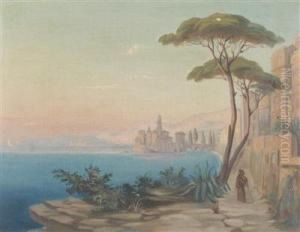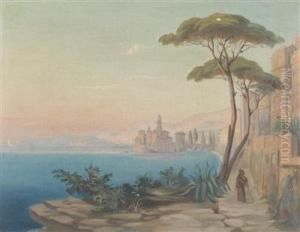Heinrich Wilhelmi Paintings
Heinrich Wilhelmi was a German sculptor and artist, born in 1884 in the town of Swinemünde, which was then part of the German Empire and is now Świnoujście, Poland. His work spanned the first half of the 20th century, a period marked by significant upheavals and transformations in the arts, as well as in the social and political landscapes of Europe. Wilhelmi's sculptures and artistic contributions are reflective of the broader movements of his time, including Expressionism and later, more modernist approaches to art. Despite the challenges posed by two World Wars and the changing borders of his homeland, Wilhelmi's art remained anchored in a deep exploration of human form and emotion, combining traditional techniques with emerging styles of his era.
Wilhelmi studied art in Berlin, where he was influenced by the vibrant cultural scene of the early 20th century. He was part of a generation of artists who were experimenting with new forms and ideas, breaking away from the academic traditions that had dominated European art for centuries. His work often explored themes of human suffering, resilience, and the beauty of the human body, employing a style that was both dynamic and deeply emotional. Throughout his career, Wilhelmi exhibited his work in various galleries and public spaces, gaining recognition not only in Germany but also internationally.
The outbreak of World War I and later World War II had a profound impact on Wilhelmi's life and work. Like many artists of his time, he was caught in the tumult of geopolitical changes and the horrors of war. These experiences influenced his artistic vision, leading him to create works that reflected the turmoil and despair of the era, but also the hope for peace and renewal. After World War II, with the division of Germany, Wilhelmi continued to work and teach in what was then West Germany, contributing to the post-war reconstruction of German culture and art.
Heinrich Wilhelmi passed away in 1965, leaving behind a legacy that is marked by his deep humanity and artistic innovation. His sculptures and artistic oeuvre stand as a testament to the resilience of the human spirit in the face of adversity and the enduring power of art to capture the complexities of human experience. Though perhaps not as widely recognized as some of his contemporaries, Wilhelmi's work continues to be appreciated for its emotional depth and technical mastery, embodying the tumultuous yet hopeful spirit of the 20th century.










